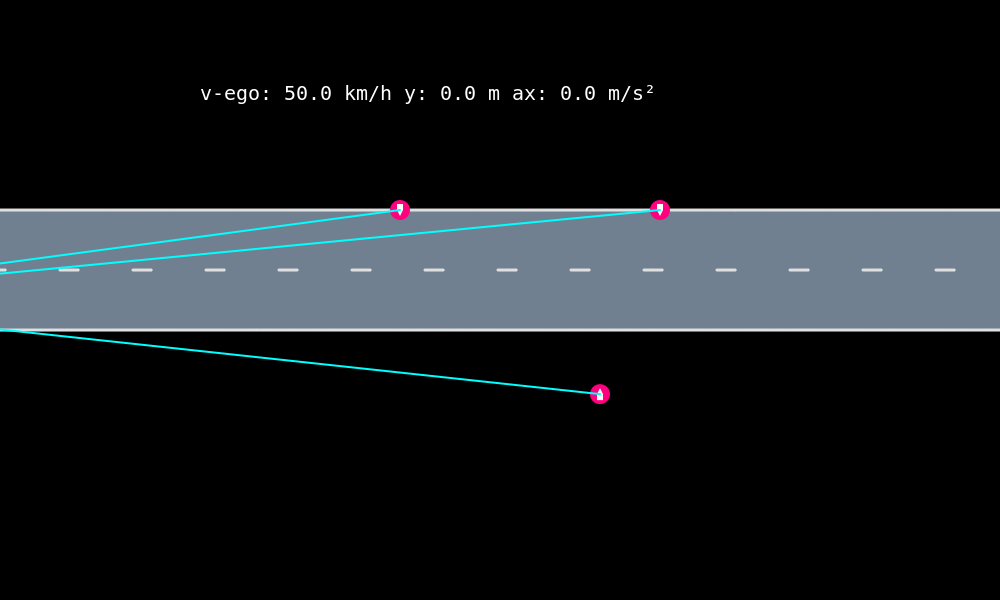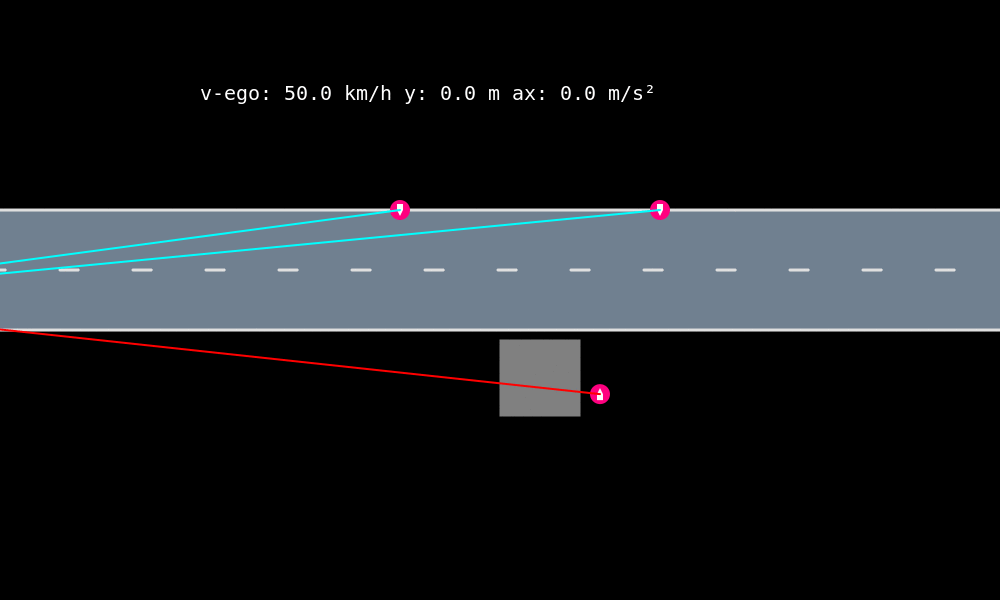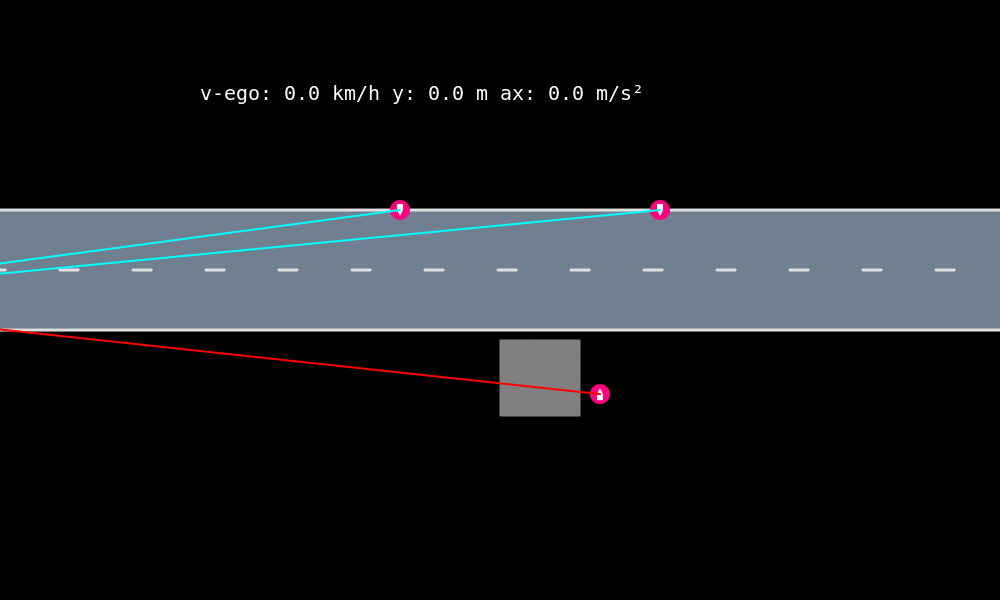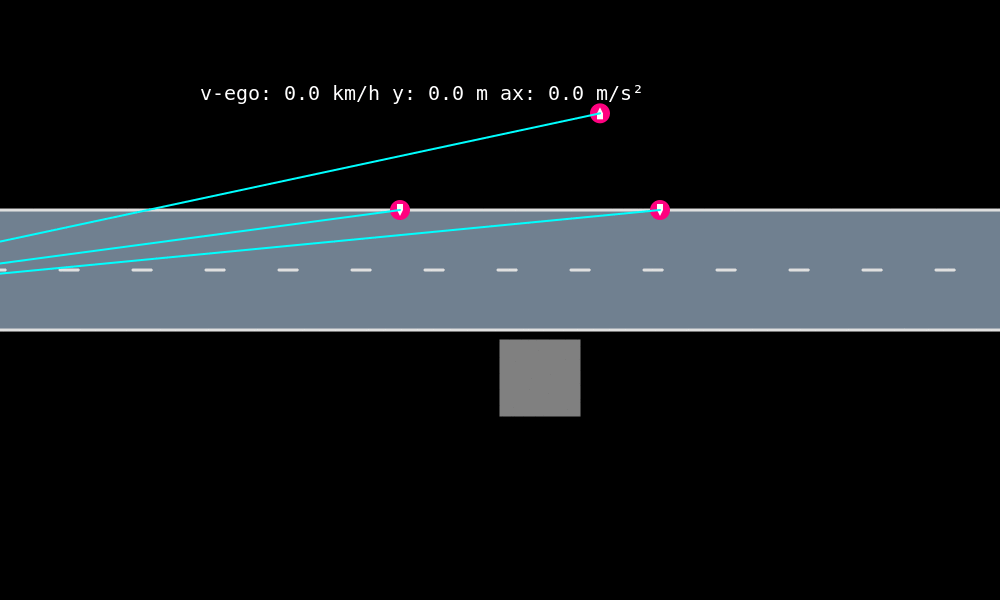contact: Markus Schratter, m.schratter@gmx.at Maxime Bouton, boutonm@stanford.edu.
This code is associated with the following publication:
M. Schratter, M. Bouton, M. J. Kochenderfer, D. Watzenig, "Pedestrian Collision Avoidance System for Scenarios with Occlusions," in IEEE Intelligent Vehicle Symposium, 2019. ArXiv.
POMDP planner in combination with an Autonomous Emergency Braking (AEB) system.
- POMDP planner: Pedestrian collision avoidance system to handle scenarios with pedestrians on the road and situations with a poor visibility, based on obstructions on the side of the road.
- AEB system: Intervenes only in unavoidable collisions.
See the paper for a more detailed description.
using Pkg
Pkg.add("POMDPs")
using POMDPs
POMDPs.add_registry() # add JuliaPOMDP registry
Pkg.Registry.add(RegistrySpec(url="https://github.com/sisl/Registry")) # add sisl registry
Pkg.add("PedestrianAvoidancePOMDP") # install the package and its dependenciessrc: Implementation of the Pedestrian Avoidance System.docs: With the jupyther notebooksdocs/PedestrianAvoidanceSystem_One_scenario.ipynbanddocs/PedestrianAvoidanceSystem_Evaluation_scenarios.ipynbdifferent implementations of the Pedestrian Avoidance System can be tested. With the notebookdocs/evaluation/plot_results.ipynbresults from different scenarios can be generated and visualized. Generated videos from selected scenarios can be found in the folderdocs/videos.policy: Srcipt and jupyther notebook to train the POMDP policy.results: The results of the evaluation of the EuroNCAP scenarios are stored for different parameters for the POMDP policy. With theEvaluation_Results.ipynbthe results can be evaluated. Generated diagrams are stored for different policies in this folder.
Run docs/PedestrianAvoidanceSystem_One_scenario.ipynb to test one scenario, different implementations of the system can be evaluated.
Run docs/PedestrianAvoidanceSystem_Evaluation_scenarios.ipynb to test all EuroNCAP scenarios for a defined POMDP policy.
Run policy/Policy_Server_SparseValueIterationSolver.ipynb to train a policy for the POMDP.
With the script src/longitudinal_script.sh different POMDP policies can be trained and evaluated with the EuroNCAP scenarios, afterwards the results are stored in the folder results.
Following animation shows a scenario with no obstruction and a crossing pedestrian from the right side. The pedestrian avoidance system (POMDP planner) reduces the velocity and accelerates when the pedestrian has passed the vehicle.
The obstruction on the right side covers the crossing pedestrian. In this case the pedestrian is for the system late visible and a collision is unavoidable. With a higher speed reduction based on the obstruction the collision would be avoidable.
Here additional to the POMDP planner the AEB system is active. Due to the AEB system (higher deceleration) the collision is avoidable and the ego vehicle does not pass the obstruction very slow.
At this scenario no pedestrian crosses the road. The ego vehicle reduces the velocity based on the poor visibility and a possible appearing pedestrian behind the obstruction. After the obstruction the ego vehicle accelerates to maintain the desired velocity of 50km/h.
An explanation of the implementation can be found paper, there is a detailed description how the system design looks like and results of the evaluation are shown. You may cite the IV paper if this code is helpful to you.



